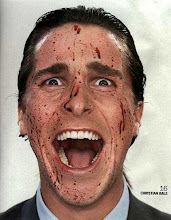Information is Ammunition: Risk Management in "Rita Hayworth and Shawshank Redemption"
Although Stephen King is most famous for his works of horror, his range as a writer extends far beyond that. His novella "Rita Hayworth and Shawshank Redemption" was adapted by Frank Darabont into the film The Shawshank Redemption, and is widely regarded as one of the best films of its time (Richard Armstrong, "Self-Made Man: The Shawshank Redemption" 83). Hope is a central theme of the story, and the protagonist Andy Dufresne battles with hopelessness throughout the film. "That tall drink of water with the silver spoon up his ass", Andy is sent to Shawshank prision for a crime he did not commit, and should have been broken by what he endured (Darabont). In spite of this Andy remains resilient, even rebellious. "Get busy living, or get busy dying" Andy quips (Darabont). He ultimately uses his knowledge of the prisons walls and sewer systems to free himself and retire to "a warm place that has no memory" (King 66). Though having hope is important, Andy's hope is not just a vague panacea for worry. Andy's hope drives him to "perseverance and hard work" (King 85). It drives him to accumulate the knowledge necessary to manage the risks of prison life, and prison escape.
Ariel Meirav, in his essay The nature of hope, presents an interesting hypothetical scene between Andy and his close friend in the story, Red. In it, Meirav attempts to understand the role of hope in the film:
"Suppose Andy and Red have been discussing the chances of attaining freedom, reviewing all options . . . Perhaps Red summarizes the picture by saying that the chances are one in a thousand. And Andy does not disagree. But, assuming them to be as rational as we like, where does this compel them regarding their hopes one way or another? Red will say, ‘I grant you it is possible, but the chance is only one in a thousand!’,whereas Andy will say, ‘I grant you the chance is only one in thousand, but it is possible!’." (223)
Meirav presents Andy's hope and Red's relative hopelessness as the crucial difference between the characters. Although Andy may indeed believe in the possibility that his hope grants him, this alone cannot be all that sustains him through his time in prison. Nor is hope the soul cause for his schemes. A "tough-minded" calculator, Andy uses all of the skills that propelled him to success outside the prison to make good his escape from inside it (Armstrong 80).
Frank Partnoy, a professor of Law and Finance at the University of San Diego School of Law, in an interview for the PBS documentary series Frontline, presents a somewhat different assessment than Meirav as to why two parties with the same odds of success might make different choices. The question regards were risk will flow in financial markets: "If you ask people, they're basically split between two camps: One says that risk will flow to the smartest person, the person who best understands it, and the other says that risk will flow to the dumbest person, the person who least understands it". Andy takes an incredible risk by attempting to break out of the prison. Red estimates that there have been about 400 escapes from "the Shank" and only about 10 had succeded (King 75 ). Andy takes the long odds on breaking out of the prison because his hope is married with years of meticulous plotting. In the film Red remarks, "I remember thinking it would take a man six hundred years to tunnel through the wall . . . Andy did it in less than twenty " (darabont) . Andy's plans work on geologic time scales. He has a "patient, meticulous nature" (King 86) . He researches the lay of the prison sewer lines, and experiments with the strength of the prisons walls. Andy invests in something that the warden, the other prisoners, and the guards, do not, knowledge. Because he is better informed he can manage risk in a way other prisoner of Shawshank can't.
Carving strait through the prision walls was a gamble. Andy was "playing for high stakes" (King 90). Though prisoners of the past had also took the gamble, it was Andy's insider knowledge that made his success "possible" (Meirav 223). The walls of the prision that had confined so many men were only a challenge to him. Hope planted the seed, but Andy then got to the hard work of making that hope a reality.
(ed. not the greatest paper but shawshank is boring and I like the Partnoy quote.)










